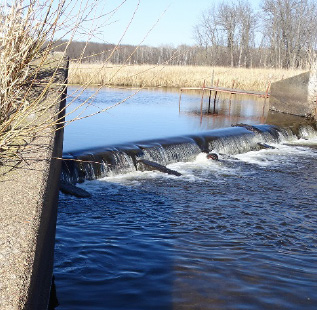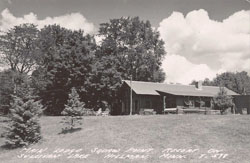LSA’s Mission Statement
As the Lake Sullivan Association has evolved over time, its important to review and validate that the LSA Mission Statement keeps the organization on it’s desired track. Some reasons to review a Mission Statement –
- If the organization has achieved it’s mission and/or problem has been solved.
- If the business environment (financial, regulations, customers) has changed.
- If the statement allows the organization to change and grow.
- If the organization’s mission is still relevant.
LSA MISSION STATEMENT:
The Lake Sullivan Association is a non-profit 501(c)(3) organization dedicated to improving lake quality and fellowship to enhance the lives of association members, property owners, and visitors of Lake Sullivan.
Minnesota Lakes & Rivers Advocates
Minnesota Lakes and Rivers Advocates is the only advocacy group soley focused on protecting Minnesota’s lake and river heritage for current and future generations by forging powerful links between lakes, lake advocates and policy makers.
They…
Lead in efforts to fund and implement a comprehensive statewide plan to halt the spread of Aquatic Invasive Species.
Work to reform lakeshore Property Taxes to protect lakeshore from overdevelopment and to keep the lake legacy affordable for future generations.
Strive to protect surface Water Quality in Minnesota with information and policy priorities.
Work with policy makers to advocate Aquatic Habitat measures, and work with Lake Association members to implement aquatic plant management.
Lead in advocating for strong Shoreline and Forestland Stewardship incentives.
Offer Legacy Seminars to help ensure the treasured family heritage of time a the lake or in the woods with family can continue for generations to come.
Ice pushup and erosion control
Greetings Sullivan Lake residents and property owners. This past winter was another year of inadequate snow cover so we saw more ice push up and erosion problems this spring. It is inevitable on some lakes, worse on some sides than others, and no one really knows how to prevent it entirely.
Following are some of our observations and experiences on your lake and others in the county.
Ice push up might happen once in ten years or every year to some degree. It generally happens when the lakes do not have adequate snow cover over the ice, and the spring thaw is erratic. Thawing and refreezing again and again, creates blocks of ice and the expansion pushes into the shoreline and is a very powerful source of energy. No amount of rock rip rap or vegetation can prevent this type of damage.
As I said, rock rip rap does not prevent push ups. It might help in lighter ice years, and if the rock is angular and irregular in shape and size, that lends to a bit more protection. However, most rock used for rip-rap in this area is field stone and round. The rip-rap itself might wind up pushed up along with the shoreline and now you have an even bigger mess to contend with.
Most shoreline owners don’t want to hear about aquatic vegetation but none-the-less, the aeration that aquatic vegetation provides to the lake, is the best preventative to ice problems. It might still occasionally happen, but not as likely, and not as severely.
The introduction of aquatic plants requires a permit from the DNR Division of Aquatics but you may also be able to get some established by allowing some existing vegetation to expand a bit. Thin in terms of having adequate clearing for boat traffic and perhaps a bit of swimming but if you can resist eliminating too much vegetation, it helps.
Our office does have State Cost Share dollars that can assist if a landowner desires to replant the shoreline to native materials and is willing to allow for a minimum of 20’ of buffer. Riparian buffers is still an erosion control practice that reduces shoreline erosion from wave action and natural causes. It also aids in runoff from lawn chemicals and grass clippings. If you are mowing lawn down to the waters’ edge, you add phosphorus to the water which creates algae growth and you are diminishing the quality of your lake water.
If shrubs and trees aren’t acceptable to you, try designating a “no-mow” zone of 12-15 feet. Allowing the grasses to reach their full height will not only filter nutrients from entering the lake, but the root growth will increase accordingly and hold the soil better.
Rock rip-rap is still an acceptable alternative, but is vastly overused in our county, and particularly on Sullivan Lake. You do need a permit from Morrison County Planning and Zoning for rock rip-rap and possibly from DNR if the rock extends into the water more than 7 feet. Some homes and cabins don’t have room to allow trucks and equipment to get close enough to install rock and it can be installed on the ice if necessary but there is usually some small adjustments needed by hand the following spring.
A very reasonable alternative, and much cheaper is the use of bio-logs. We have been using them for the past several years on the river and other lakes, and find them to be a much more natural and less expensive way to address the undercutting of a shoreline. Undercutting is when the base of your shoreline is cutting away at the waters edge, creating a shelf. The shelf sloughs off, and the process starts all over again. Riparian buffers and bio-logs do not require any permits.
Plants alone can be used sometimes to address undercutting, but in other cases, we will recommend the use of the logs. The logs are made of a coconut fiber and come in 10 foot sections. They come in various diameters. The logs are secured with wooden pegs hammered into the shoreline and lake bottom, or can be tied with cables. Vegetation can grow right through the log and we sometimes ask the landowner to shove willow cuttings right through the log into the soil. When developed, the logs aren’t even seen, and it allows the shoreline to look natural.
Our staff is available for technical assistance in helping you design a buffer area or addressing your erosion problems. And again, we may be able to offer financial assistance, on a case by case basis. Our phone number is 320-616-2479 and ask for Helen or Alan. We will either visit your shoreline on our own with your permission, or meet you there by appointment and discuss the various options to help you protect your valuable shoreline property.
Erosion Control Tidbits from MORRISON SOIL AND WATER CONSERVATION DISTRICT By Helen McLennan
Lake Sullivan dam inspection report
Engineers with the Minnesota Department of Natural Resources inspected the Lake Sullivan dam on April 14, 2015. This dam is exempt from Dam Safety Regulations but is inspected about once every eight years because it is owned by DNR.
 The present dam was built in 1935 for lake level control and to prevent carp from entering the lake from the Mississippi River. In 1950 the catwalk was removed and all piers were shortened. The dam had six stop log bays with each being 5.75 feet wide. The dam presently has a concrete weir about 15 inches above the sill.
The present dam was built in 1935 for lake level control and to prevent carp from entering the lake from the Mississippi River. In 1950 the catwalk was removed and all piers were shortened. The dam had six stop log bays with each being 5.75 feet wide. The dam presently has a concrete weir about 15 inches above the sill.
The existing dam is in fair to poor condition but it is functional and fairly stable. The concrete is in fair condition with several areas of exposed rebar and other concrete deterioration due to weathering. The concrete also shows signs of structural distress as evidenced by large cracks and leaning abutments.
The earthen embankments flanking either side of the dam are 1 to 2 feet below the concrete abutments. Embankments are lowest adjacent to both abutments, likely the result of shifting of the abutments. The dikes are stable. Routine mowing or other measures are recommended to control the growth of vines and brush.
Due to water flowing over the concrete weir Dam Safety was unable to evaluate the condition of the weir. The weir was repaired in 2007 to reduce leakage through the dam. At the time of this inspection no debris was in the spillway that would obstruct the flow of water.
Dam Safety is currently monitoring the dam and is committed to make necessary repairs to maintain current lake levels until funding to repair the dam is obtained. The dam is maintaining water levels as intended. Dam Safety did not observe any structural deficiency requiring immediate attention to maintain the dam in its current state. Future repair should address the tilting concrete abutments, repairing deteriorated concrete and adding earth fill to the embankment.
2015 LSA Picnic
The 2015 Lake Sullivan Association picnic was hosted at the Circle of the Pines in Hillman on July 19th. Many LSA members and their families enjoyed an afternoon filled with food, fun and festivities.
Games included three-legged race, turnaround sprints, shoe kick, water balloon toss, egg toss and more!
Thank you LSA Picnic Committee for putting on such a great event!
Get rid of pesky deer flies easy
Clean up and trash removal options
The Sullivan Lake Association will not host Trash Day in 2015. But that doesn’t mean that there are not other options to help make your yard and Lake Sullivan a cleaner place!
The Morrison County Solid Waste Management Facility is located near Little Falls Township and can take any solid waste including:
Demolition debris
Household hazardous waste
Recycling
Appliances
Electronics
Click here to visit the Morrison County landfill website for more information.
The Richardson Township Recycling Collection provides services to recycle:
Steel, aluminum and tin
Glass
Plastic
Newspaper
Paperboard and cardboard
The recyclable materials are accepted at the Pulaski Township Hall located in Harding. These items must be separated according the above categories. Recycling is free and provided by the townships of Platte, Pulaski and Richardson.
Click here to view the recycling calendar, hours and recycling items.
Morrison County AIS Plan
Aquatic invasive species (AIS) are threatening Minnesota waters including Lake Sullivan. These nonnative species have the potential to harm fish populations, water quality, and water recreation. The 2014 Aquatic Invasive Species Prevention Plan for Morrison County outlines the efforts that Morrison County will undertake to help prevent the spread of harmful AIS within Minnesota.
AIS are an emerging issue within Morrison County. Few waters within the County are infested with invasive species at this time so the County has a unique opportunity to implement some prevention strategies to protect the waters within Morrison County. The Comprehensive Water Plan identifies efforts lake associations and lake improvement districts have made to treat invasives and the importance of that work. As the Water Plan is revised in 2015, AIS will undoubtedly have more of a presence within the plan.
The impetus of this plan has come from the 2014 allotment of the Aquatic Species Prevention Aid. These first steps into AIS prevention include ground level education of likely users of Morrison County’s water resources as well as a bolstering of the ongoing efforts many lake associations/improvement districts have already undertaken, as well as the inspections the Department of Natural Resources provides within Morrison County, and the services provided by the Permitted Lake Service Providers.
Click here to view the 2014 Aquatic Invasive Species Prevention Plan for Morrison County.
Send LSA your old photos
You’ve been meaning to do it for a long time… now is the time to go through your old family photo albums for your association. LSA is looking for old photos of Lake Sullivan for a couple of reasons:
1. We hope to find early historical photos of our lake prior to the DNR Platte River dam, which was built in the 1930’s, to help demonstrate the need to have the Platte River dam rebuilt.
2. We also want to build up our archive of historical photos of the lake and the families that have enjoyed it and share them on our new website.
If you have a scanner you can scan your photos and email them to LSA. If you don’t have a scanner, just let us know using the same link and we’ll arrange to pick them up, scan them, and return them to you.
2015 LSA member survey results
More than 80 residents of the Lake Sullivan community responded to the 2015 LSA member survey. The survey asked residents opinions about a variety of subjects including donations, SLID, charitable gambling, aquatic invasive species, trash day and more.





































